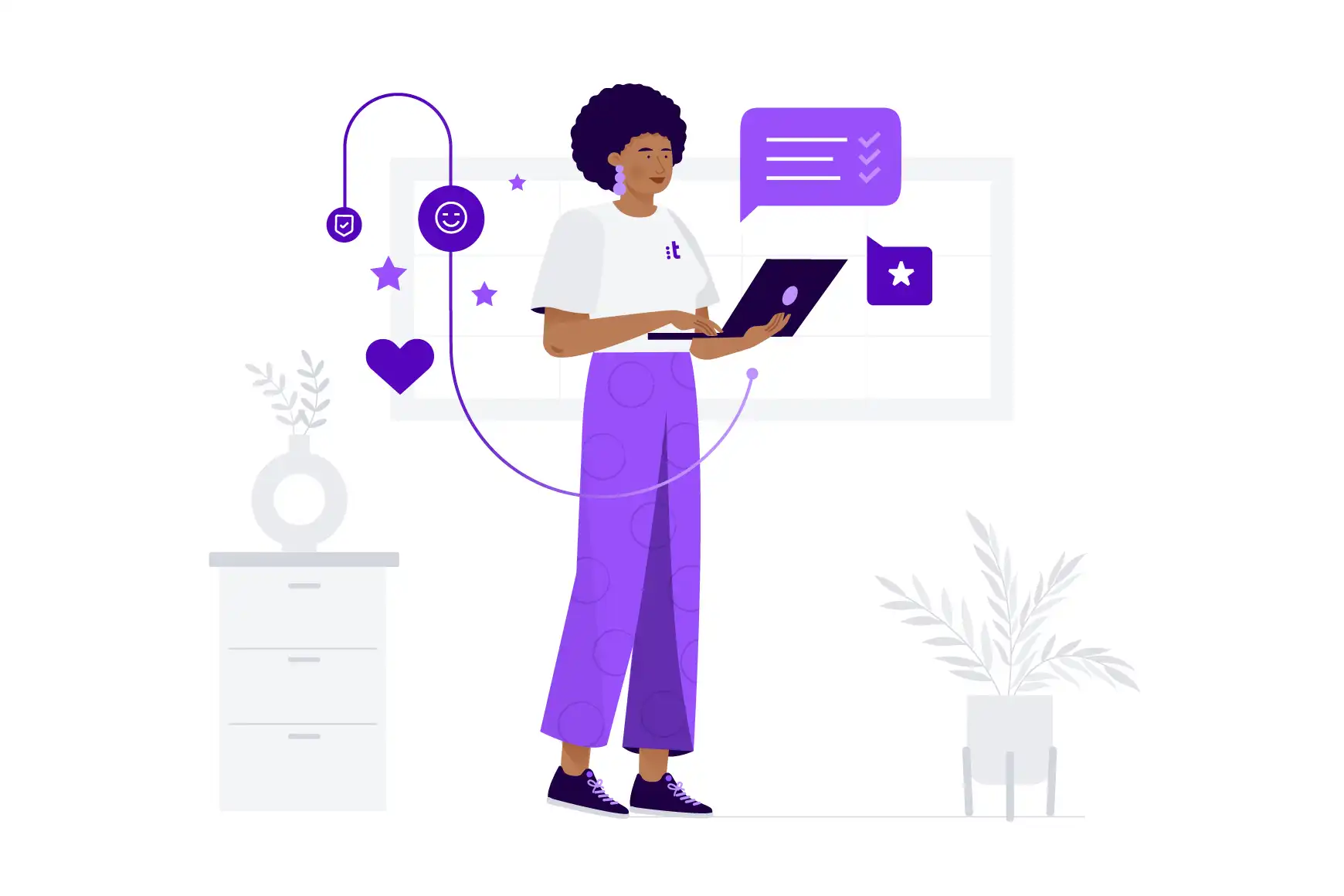3 reasons why your agents are stressed out (and how to foster call center agent engagement)

By Anders Peterson
0 min read

This is a guest post by Anders Peterson, partner marketing specialist at Calabrio.
It’s not easy working in a contact center. Take it from me, I used to work at an IT help desk.
Odd hours, inflexible schedules, angry callers, overbearing managers, and very little recognition take a heavy toll. It makes sense then, that when surveyed for Calabrio’s last agent well-being survey, 96% of respondents claimed to feel stressed at work at least once a week.
The contact center is the bedrock of many brand interactions—the frontline, the face/voice of an organization. So, when a customer’s first contact point with a company is suffering, how could that not directly affect the customer experience?
Another recent study revealed that 60% of respondents felt that staff attrition and absence, while initially pandemic-related, is still causing customer experience issues. As someone with first-hand experience, I can confidently say that while the pandemic may have brought a lot of things to light, these issues, like attrition and agent wellbeing (or lack thereof), have always been there. It’s now, in the wake of the Great Resignation, that we’re truly acknowledging how important the contact center employee experience is to the customer experience.
The fact is that hybrid workforces heightened customer expectations and brought new challenges to the contact center. It is imperative, then, to create and nurture a culture of health and wellness in contact centers. Give agents the freedom they need, technology that makes their jobs easier and more efficient, and create a new generation of contact center leaders. Workforce wellbeing leads to organizational growth from the inside out—you can make it your competitive advantage.
Improving agent engagement and well-being in contact centers.
We’re seeing that companies successfully accelerating into our “new normal” are leaning into the challenge of creating engaged and satisfied agents and managers. Investing in workforce wellbeing can turn a tight labor market into a competitive advantage—building a compassionate and empowering work culture that attracts and retains top talent at all levels. Calabrio’s Workforce Wellbeing Recovery Toolkit provides clear insights and simple resources to help organizations make smart improvements and high-impact investments. The toolkit shows you how to identify key stressors, and includes checklists to improve wellbeing via processes and a tech buyer’s guide to support the success of each stakeholder throughout the business.
Let’s take a peek at the key agent stressors the toolkit helps you overcome.
Starting point: Key sources of agent stress to target.
So, as contact centers look to support and enhance agent wellness, where do they start? We used data from our recent Health of the Contact Center report to shed light on the three biggest stressors for agents today:
Too many calls.
Customer service is a job that requires a high level of emotional commitment: you’re often dealing with distressed clients who will transfer their anger to the people they’re talking to. At the same time, agents are expected to maintain a fast pace and contribute to revenue growth and business results.
Taking too many calls can stress your agents and reduce the quality of interactions. There’s always another interaction coming—the work can feel endless as the queue grows. One in three agents says too many calls is their biggest source of workplace stress. Add to that the growing number of interactions across all channels splintering data into more and more silos and it’s easy to see why agents are spread thin.
Allowing agents to switch between different channels (like having a break from calls to handle chat queries, for example) keeps them from becoming emotionally and mentally drained.
Managing schedules.
A lot of us have reached a breaking point during lockdowns because we had to juggle it all: work, childcare, and homeschooling, all at the same time. If you ever experienced being yelled at on the phone by an angry customer, while trying to soothe a screaming child and quiet a barking dog, you will understand how stressful it can be.
While lockdowns are now only a memory, many contact center agents still find balancing their work with family duties one of the most challenging aspects of their careers. 41% of agents said work/life balance is their biggest stressor. The inflexibility of some contact center schedules hasn’t paired well with unpredictability—school and childcare closures, caring for loved ones, and other surprises make managing schedules a key opportunity to alleviate some of this stress.
Higher customer expectations.
Three out of four agents say rising customer expectations are a big challenge. Our consumer research shows people want faster and more empathetic service for more complex needs today. Agents equally desire more support for complex calls. This is a major opportunity to assist them and reduce stress while offering room for development and creating better customer experiences.
Traditionally, customer service is reactive, meaning that when a client contacts the company, they’re already frustrated. A proactive contact center, on the other hand, sends customer communications proactively, instead of waiting for customers to come with problems, decreasing the number of angry calls and giving agents the opportunity to develop relationships with customers.
Our toolkit breaks down how to deal with these stressors as an organization—through technology and physical activity. We’ve included a checklist of activities for agents to reduce stress whether they’re in-office or at home, along with a leadership checklist with tips on empowering agents to take control of their work/life balance and creating a culture of wellbeing from the top down.
Begin your inside-out growth strategy.
To thrive in the future of work, organizations need to build strategies that focus on elevating employee wellbeing and staff empowerment. Those that don’t play this game well will fall by the wayside. They won’t be able to attract or retain the best talent in a tight labor market and will succumb to the strain of living in the past.
Use Calabrio’s Workforce Wellbeing Recovery Toolkit to learn how to elevate employee wellbeing and drive rapid improvements to individual customer interactions. We believe these can be achieved through implementing technology solutions, which is why you’ll want to check out the Buyer’s Guide section of the toolkit. Hit the links to find the toolkit and to check out the latest true-cloud, enterprise-grade workforce optimization solution from Calabrio.
See all of Calabrio’s offerings on Talkdesk AppConnect: Calabrio WFM, Calabrio Analytics, and Calabrio Quality Management.







